
 So far as the interior design goes, the Etios remains the most radical. The instrument console is placed in the middle of the dashboard and is tilted towards the driver, making it easy to read. It offers several cup/bottle holders and a large glovebox-cum-chiller. The air-conditioner vents are smartly designed and positioned, which rotate and swivel to position the draught as per your liking. However, there are several signs of cost cutting, which become evident with the missing climate control and electronic outer rear-view mirror (ORVM) adjuster. The seats of the Etios are wide, offer the right backrest angle and are quite comfortable. The fabric looks rugged and built to last. We got to test the top of the line VX variant, which has a sporty red combination for the seats’ fabric and a matching red gear knob. The best aspect about the VX’s interior is probably the flat-bottom steering wheel wrapped in leather.
So far as the interior design goes, the Etios remains the most radical. The instrument console is placed in the middle of the dashboard and is tilted towards the driver, making it easy to read. It offers several cup/bottle holders and a large glovebox-cum-chiller. The air-conditioner vents are smartly designed and positioned, which rotate and swivel to position the draught as per your liking. However, there are several signs of cost cutting, which become evident with the missing climate control and electronic outer rear-view mirror (ORVM) adjuster. The seats of the Etios are wide, offer the right backrest angle and are quite comfortable. The fabric looks rugged and built to last. We got to test the top of the line VX variant, which has a sporty red combination for the seats’ fabric and a matching red gear knob. The best aspect about the VX’s interior is probably the flat-bottom steering wheel wrapped in leather.
 The Dzire interior has a combination of black and grey, which will soon get a much-needed upgrade with the onset of the all-new Swift and Dzire scheduled later this year. The rear seats of the Maruti are comfortable, though a little tight for three adults compared to the well-cushioned seats of the Etios and the Manza. The Toyota does not have a centre arm-rest in the rear like the other two, the rear seats don’t fold nor are they contoured as in the Manza, which gives the passengers a more snug feel in the Tata. The good build and finish are as expected of Toyota, but
The Dzire interior has a combination of black and grey, which will soon get a much-needed upgrade with the onset of the all-new Swift and Dzire scheduled later this year. The rear seats of the Maruti are comfortable, though a little tight for three adults compared to the well-cushioned seats of the Etios and the Manza. The Toyota does not have a centre arm-rest in the rear like the other two, the rear seats don’t fold nor are they contoured as in the Manza, which gives the passengers a more snug feel in the Tata. The good build and finish are as expected of Toyota, but 
 the plastic quality of the Etios failed to impress. It lacks the upmarket feel. In comparison, the Manza uses a better combination of quality material, which gives the interior of the Tata an edge over others. The trump card in respect of the Toyota’s interior is its massive 595-litre boot space, which can easily give most cars even a segment above a run for their money. Since Indians are not known to be light travellers, the extra 150 litres of storage space will add a lot of weight to their buying decisions.
the plastic quality of the Etios failed to impress. It lacks the upmarket feel. In comparison, the Manza uses a better combination of quality material, which gives the interior of the Tata an edge over others. The trump card in respect of the Toyota’s interior is its massive 595-litre boot space, which can easily give most cars even a segment above a run for their money. Since Indians are not known to be light travellers, the extra 150 litres of storage space will add a lot of weight to their buying decisions. 
 As expected, all the three cars have very different driving dynamic and, as they say, one man’s poison can be another’s medicine. The Dzire has the most familiar driving position and is also very engaging. The 1.2 litre, K-series, Suzuki motor is very peppy, but also the least powerful of the lot with 85 PS and a torque of 113 Nm. The Manza’s 1.4 litre Safire mill, borrowed from FIAT, produces 90 PS and 116 Nm of torque. But what works against the above two cars and in favour of the Etios is the power-to-weight ratio. The Etios is just 930 kg, making it over 100 kg lighter than the other two. It has a very able, and also the largest, 1.5-litre motor that can churn out 90 PS and a magnificent 132 Nm of torque. The light weight and the torquey nature of the
As expected, all the three cars have very different driving dynamic and, as they say, one man’s poison can be another’s medicine. The Dzire has the most familiar driving position and is also very engaging. The 1.2 litre, K-series, Suzuki motor is very peppy, but also the least powerful of the lot with 85 PS and a torque of 113 Nm. The Manza’s 1.4 litre Safire mill, borrowed from FIAT, produces 90 PS and 116 Nm of torque. But what works against the above two cars and in favour of the Etios is the power-to-weight ratio. The Etios is just 930 kg, making it over 100 kg lighter than the other two. It has a very able, and also the largest, 1.5-litre motor that can churn out 90 PS and a magnificent 132 Nm of torque. The light weight and the torquey nature of the 

 Etios give it amazing driveability; even after driving for hours there is no sign of fatigue. It is also the noisiest, with a distinct murmur and some of it does penetrate into the cabin. Yet it is the fastest to get off the mark thanks to its gearing, which feels a little short. Maybe because the sedan will share the gearbox with its sibling hatchback, the Liva, which will be powered by a smaller 1.2-litre engine. We achieved a top speed of 171 km/h, which is more than adequate in this segment. In 0-100 km/h the Toyota is three seconds faster than the rivals. The gear shift is smooth and due to the linear flow of torque one can speed off even on low revs without having to shift down, making the Etios very agile and great fun to drive around in town. The good roll-on figures further strengthen its city driving and overtaking abilities. You also get a high driving position, which accounts for better outside visibility, though the steering wheel seems to be a mite low (even after being adjusted to the highest position) and might be an issue with taller drivers.
Etios give it amazing driveability; even after driving for hours there is no sign of fatigue. It is also the noisiest, with a distinct murmur and some of it does penetrate into the cabin. Yet it is the fastest to get off the mark thanks to its gearing, which feels a little short. Maybe because the sedan will share the gearbox with its sibling hatchback, the Liva, which will be powered by a smaller 1.2-litre engine. We achieved a top speed of 171 km/h, which is more than adequate in this segment. In 0-100 km/h the Toyota is three seconds faster than the rivals. The gear shift is smooth and due to the linear flow of torque one can speed off even on low revs without having to shift down, making the Etios very agile and great fun to drive around in town. The good roll-on figures further strengthen its city driving and overtaking abilities. You also get a high driving position, which accounts for better outside visibility, though the steering wheel seems to be a mite low (even after being adjusted to the highest position) and might be an issue with taller drivers.
Budget Bash – Etios vs Dzire vs Manza
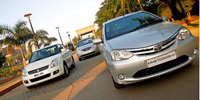



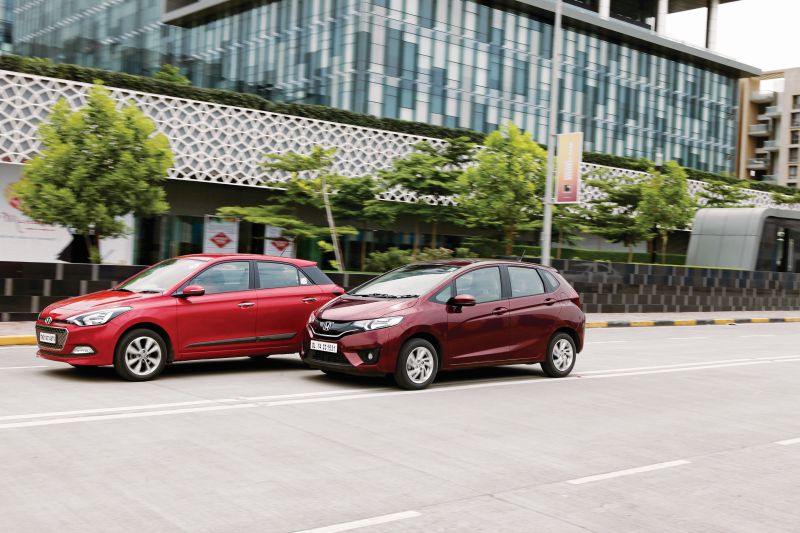
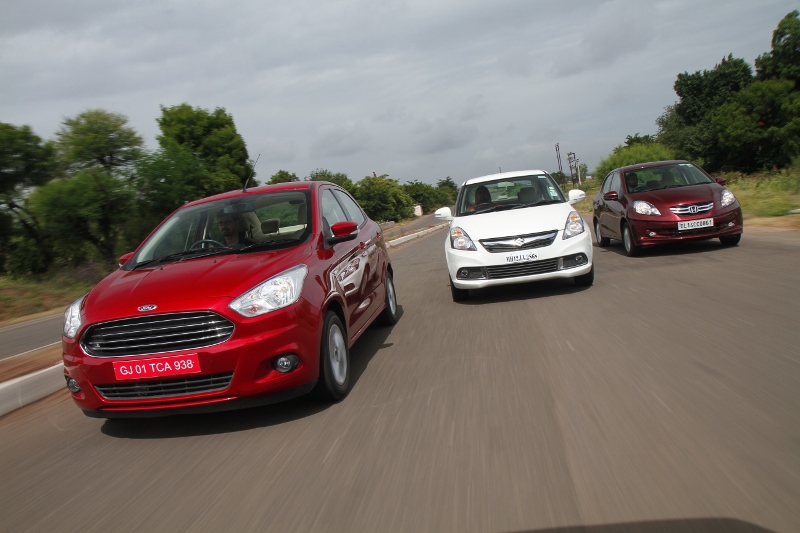
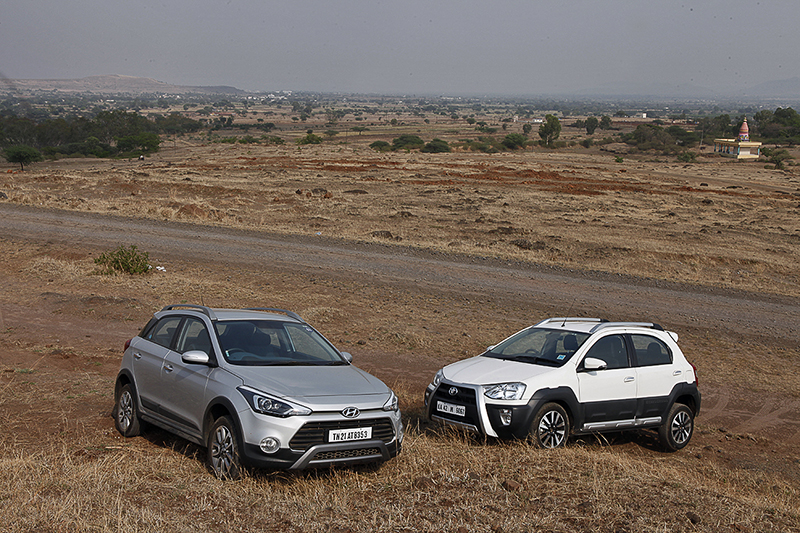
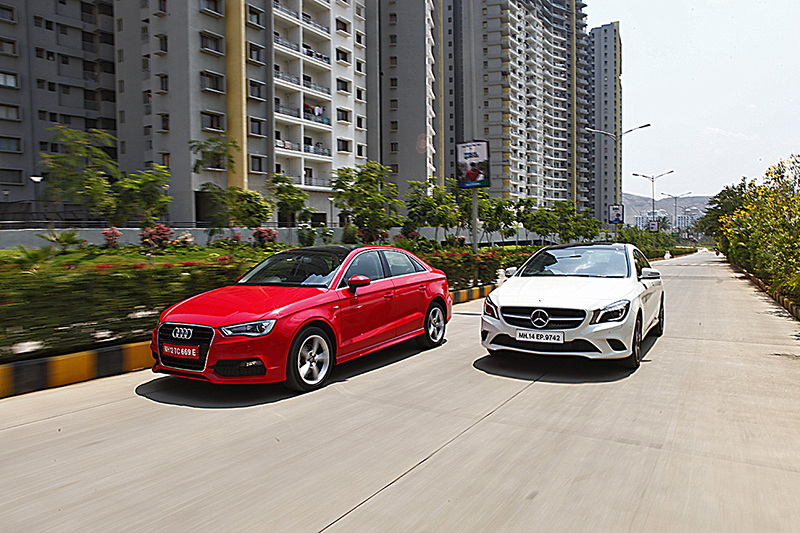
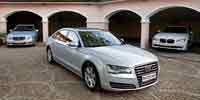

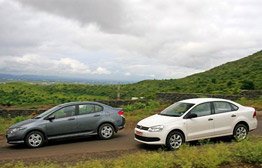
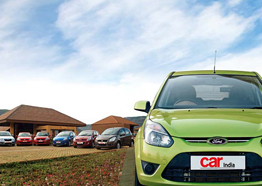
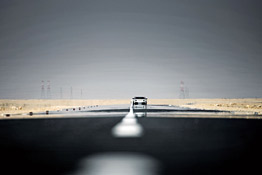
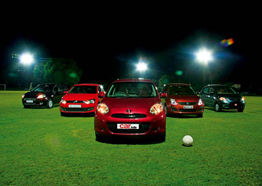




Leave a Reply